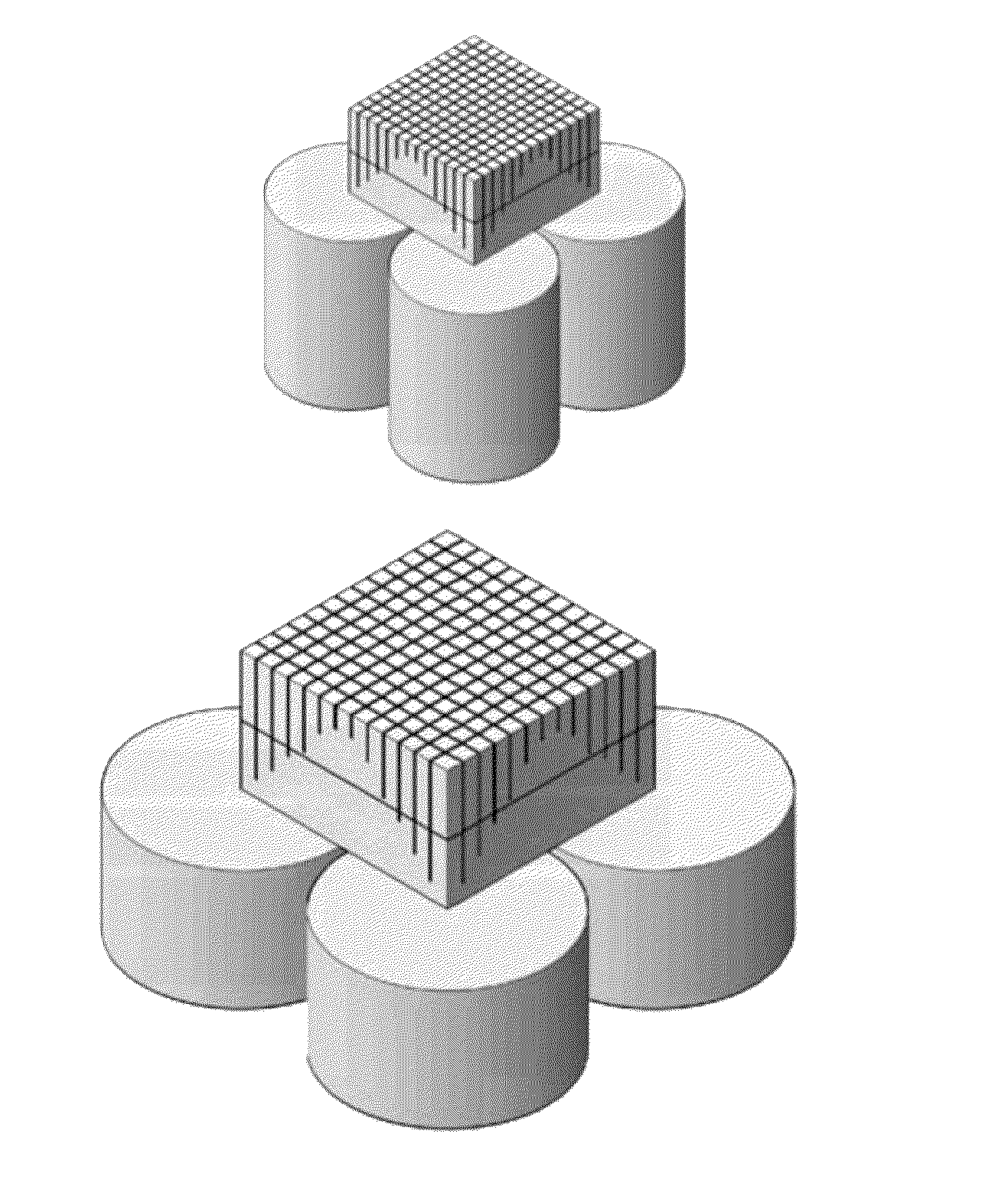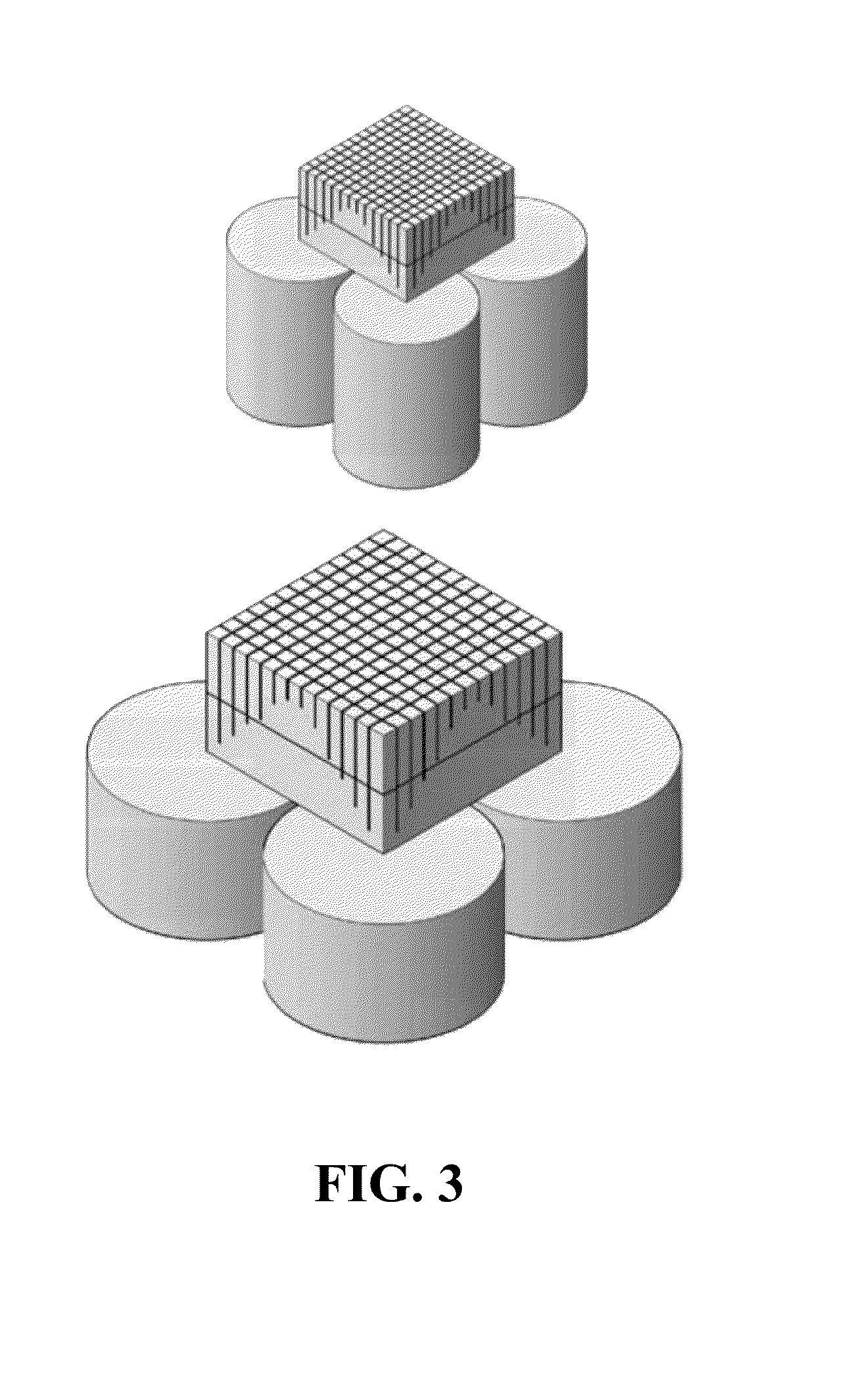Apparatus and methods for photosensor quadrant sharing
a quadrant and photosensor technology, applied in the field of apparatus and methods for photosensor quadrant sharing, can solve the problems of poor practical clinical resolution, untapped cancer-application potential of pet in whole body, and current higher cost of sensors than pmt, so as to achieve higher resolution pqs, less cost, and economic
- Summary
- Abstract
- Description
- Claims
- Application Information
AI Technical Summary
Benefits of technology
Problems solved by technology
Method used
Image
Examples
Embodiment Construction
[0067]Referring now to FIGS. 9-11, a plurality of rectangular cross-section scintillation crystal blocks 510, 520, 530 and 540 are used to form an array 550 of blocks, as described in further detail below. In this exemplary embodiment, blocks 510 and 540 will be modified to have an asymmetric pentagonal cross-section, while blocks 520 and 530 will maintain their rectangular cross-section. Referring specifically now to FIG. 9, block 510 comprises a first side 511, a second side 512, a third side 513 and a fourth side 514. Similarly, block 540 comprises a first side 541, a second side 542, a third side 543 and a fourth side 544. In this embodiment, blocks 510 and 540 can be modified by tapering sides 513 and 514 and sides 543 and 544, respectively. In a specific embodiment, sides 513, 514 and 543, 544 can be tapered by grinding the sides. For purposes of clarity, the modification of block 510 will be described in detail below. It is understood that in this embodiment, the modification...
PUM
 Login to View More
Login to View More Abstract
Description
Claims
Application Information
 Login to View More
Login to View More - R&D
- Intellectual Property
- Life Sciences
- Materials
- Tech Scout
- Unparalleled Data Quality
- Higher Quality Content
- 60% Fewer Hallucinations
Browse by: Latest US Patents, China's latest patents, Technical Efficacy Thesaurus, Application Domain, Technology Topic, Popular Technical Reports.
© 2025 PatSnap. All rights reserved.Legal|Privacy policy|Modern Slavery Act Transparency Statement|Sitemap|About US| Contact US: help@patsnap.com



